Canberra << KAN behr uh or KAN buhr uh >> (pop. 452,670) is the capital of Australia and the nation’s leading example of large-scale city planning. The city lies within the Australian Capital Territory in southeastern Australia. The federal Parliament—the Senate and House of Representatives—meets in Canberra. The city also serves as the administrative center of the federal government, and as the headquarters of national political, business, professional, and cultural organizations. Foreign embassies are also located in Canberra.
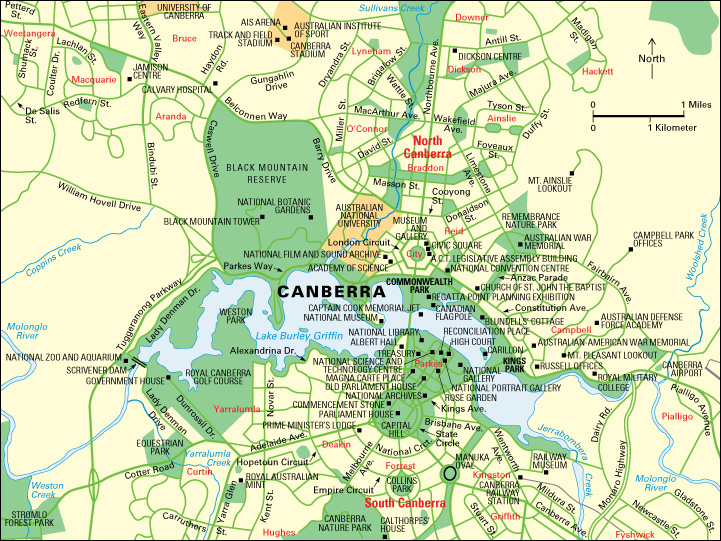
The city
is built around several hills and ridges on rolling plains. The Molonglo River flows through Canberra. A dam on the river forms Lake Burley Griffin in the central part of the city. The lake divides Canberra into northern and southern sections.


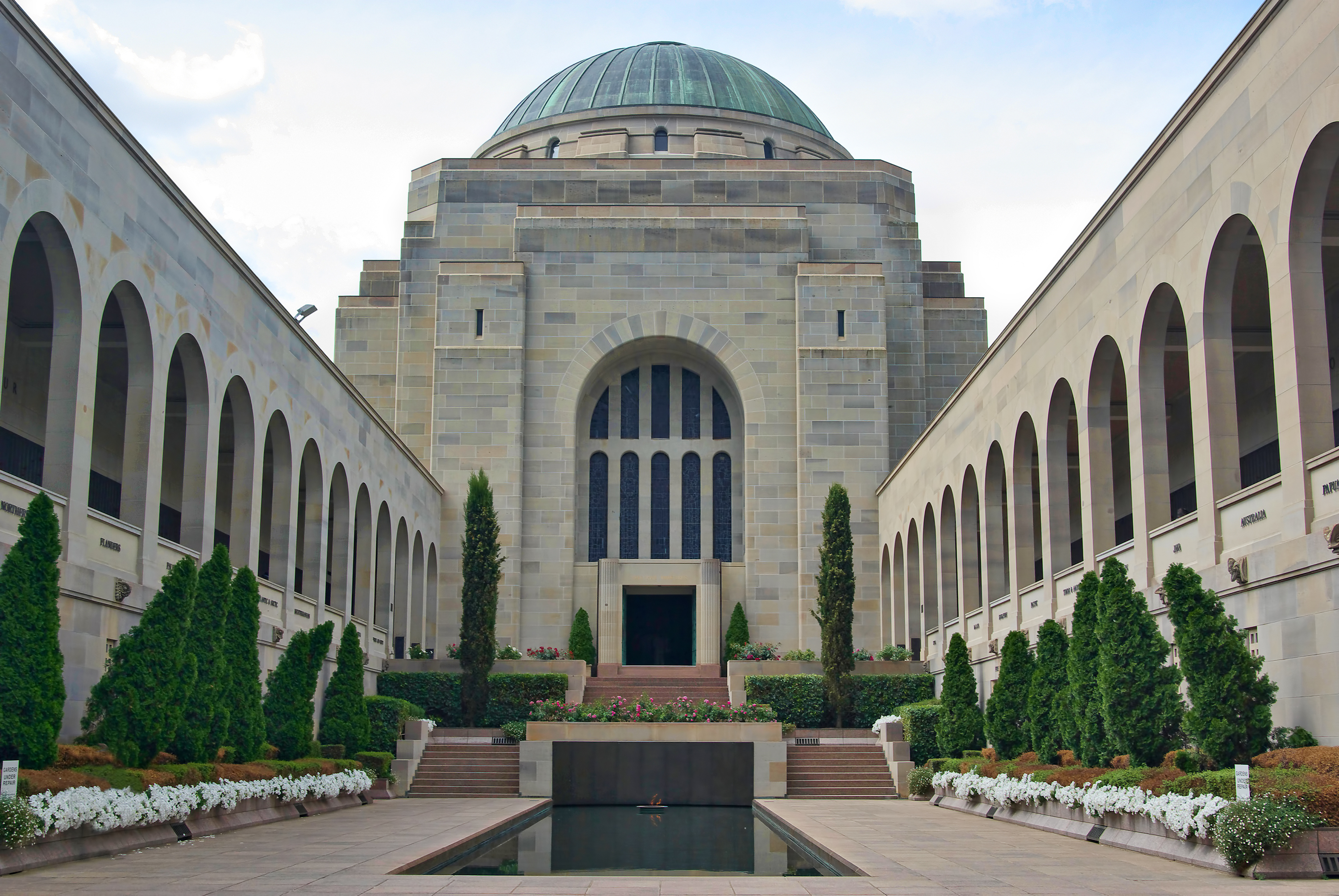
The northern section includes the commercial center of Canberra as well as the Legislative Assembly Building, which houses the city government. The Australian War Memorial honors Australian soldiers who died in combat and features a museum and an extensive archive. Two of the city’s main educational institutions, the Australian National University and the University of Canberra, are in the city’s northern section. The nearby Australian Institute of Sport trains athletes in dozens of sports. The Captain Cook Memorial features a copper globe on Lake Burley Griffin’s northern shore as well as a water jet in the lake itself. James Cook, a British navigator, claimed Australia for Britain in 1770.
The southern section of Canberra, built around Capital Hill, includes the meeting place of Australia’s Parliament and most of the other principal national government buildings. Dozens of embassies are nearby. The official residence of the prime minister, known as The Lodge, is southwest of Capital Hill. Old Parliament House, which housed the country’s Parliament from 1927 to 1988, is home to the Museum of Australian Democracy. The National Gallery of Australia features Australian art from the period of colonization in 1788 to the modern day, as well as Aboriginal and international artworks. The nearby National Library of Australia is a reference library featuring documents relating to Australian history and culture.
Residential areas of bungalows and apartment buildings extend north and south of the center of Canberra. Some small industrial plants operate near the center of the city, but most industrial activity is in the suburbs. Several new towns have been developed north and south of Canberra. These projects began during the 1960’s. The towns have their own commercial centers.
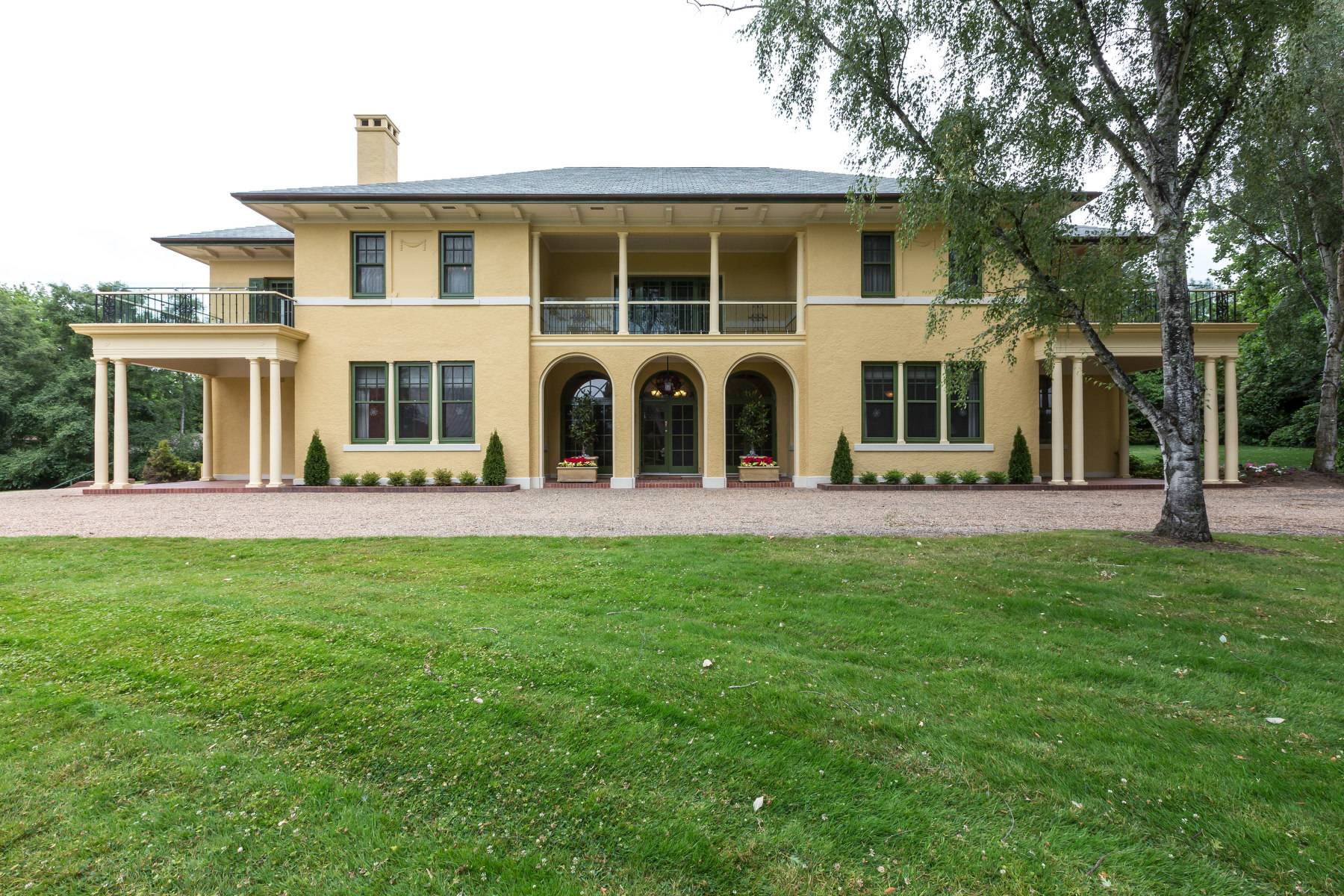
Climate.
Canberra has a dry climate, with warm summers and cool winters. It receives an average of about 25 inches (63 centimeters) of rain a year. Temperatures average about 82 °F (28 °C) in January and about 52 °F (11 °C) in July.
Economy
of Canberra is based primarily on the activities of the national government, which employs many of the city’s workers. Other leading economic activities include construction, retail and wholesale trade, and tourism. Buses provide public transportation in Canberra. The streets have special lanes reserved for buses. Air and rail travel also serve the city.
History.
Aboriginal peoples, the earliest inhabitants of Australia, lived in the Canberra area at least 21,000 years ago. Canberra stands upon the traditional lands of the Ngambri and Ngunnawal Aboriginal peoples. British explorers were the first Europeans to reach the Canberra area, in 1820. During the early 1820’s, the British settler Joshua John Moore established a station (ranch) in the area, which he called Canberry. This name is thought to be an English version of a local Aboriginal word. It was later respelled as Canberra.

In 1901, when the Commonwealth of Australia was established, Canberra was still a small rural community. In 1908, the government selected the general area as the site for a national capital. The following year, Charles R. Scrivener, a New South Wales district surveyor, recommended the city’s present site. In 1911, the federal government launched an international competition for a design for the national capital. In 1912, a city plan by the Chicago architect Walter Burley Griffin was chosen for the capital.
Construction of the capital began in 1913. In 1927, the Australian Parliament met in Canberra for the first time, and some government agencies were transferred there from Melbourne. Canberra grew slowly until the late 1950’s. Since then, Canberra’s population has increased from about 40,000 to its current size. In the 1950’s, the National Capital Development Commission (now the National Capital Authority) began building dams on the Molonglo River to create Lake Burley Griffin. In the 1970’s, the commission built an embankment over Ginninderra Creek in northwest Canberra to create Lake Ginninderra. These lakes were part of Burley Griffin’s original design for Canberra. In 1988, a new Parliament House was built. 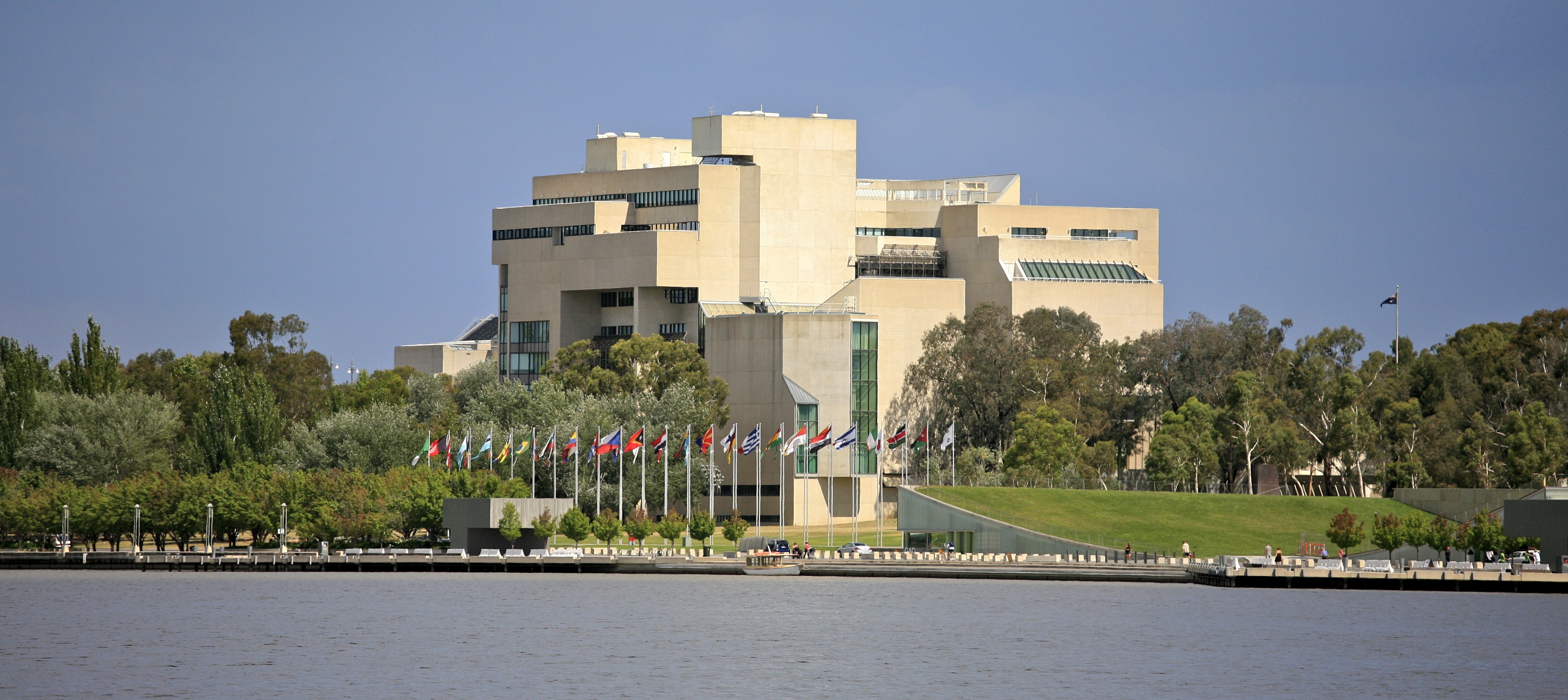
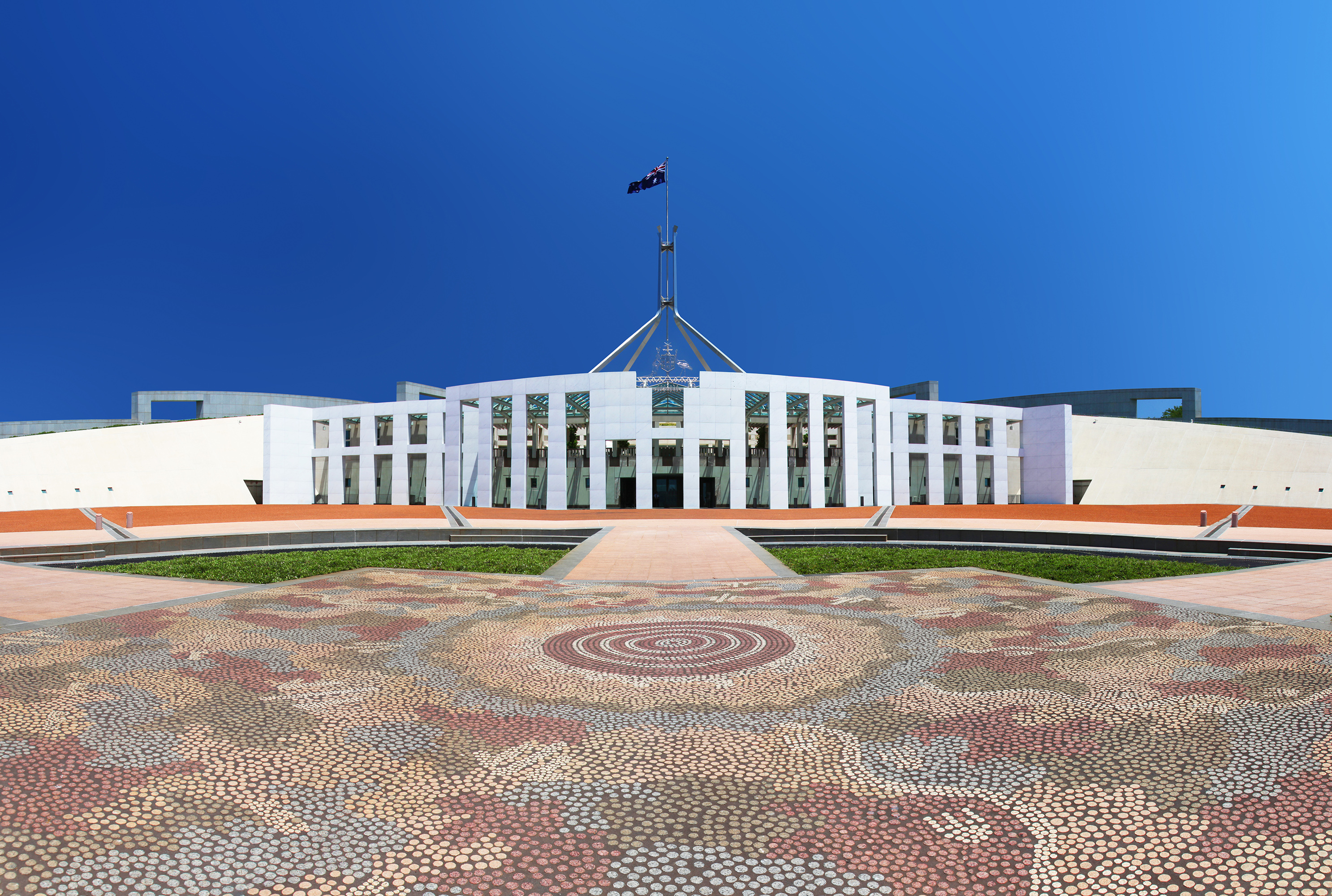
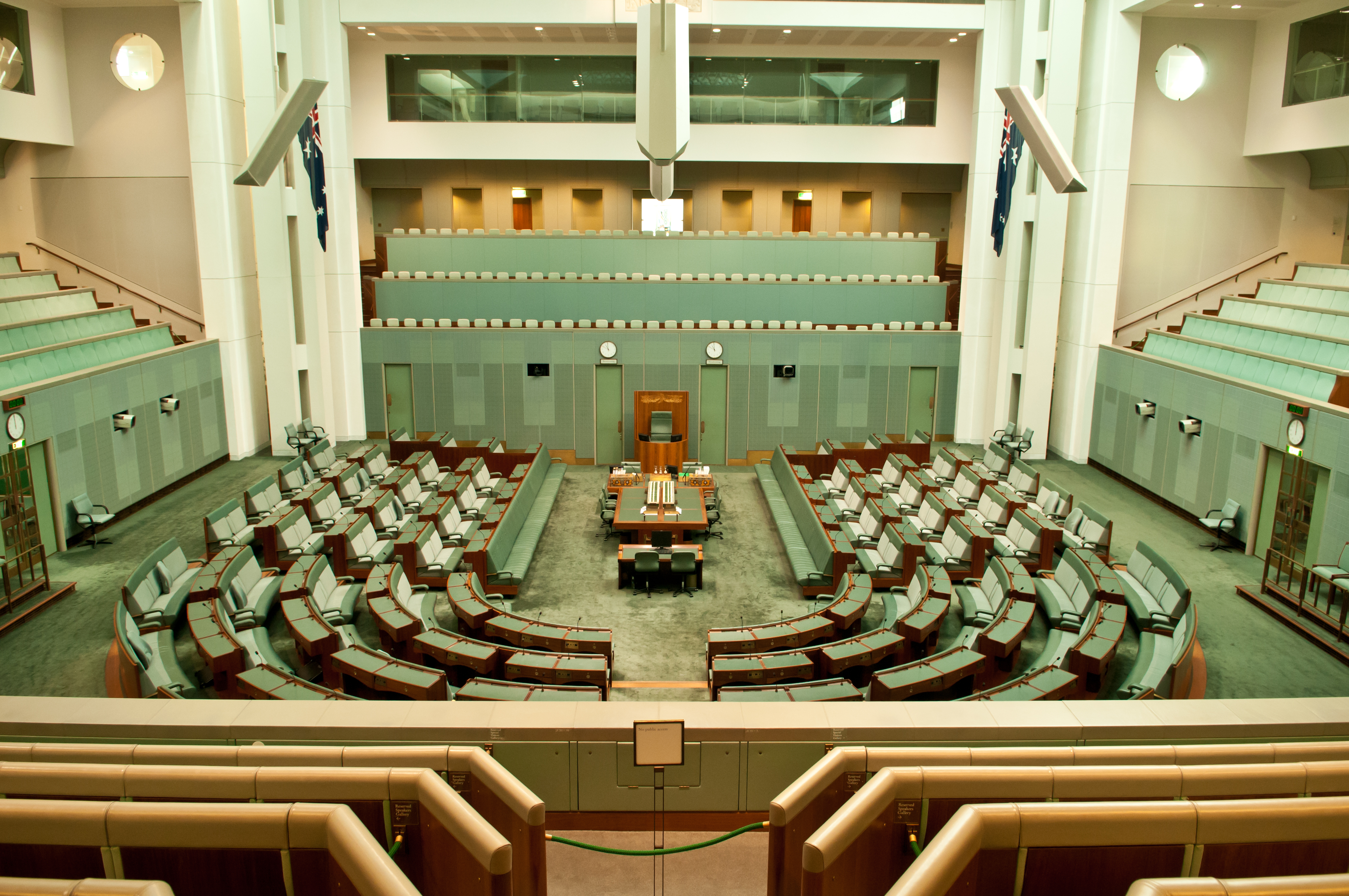
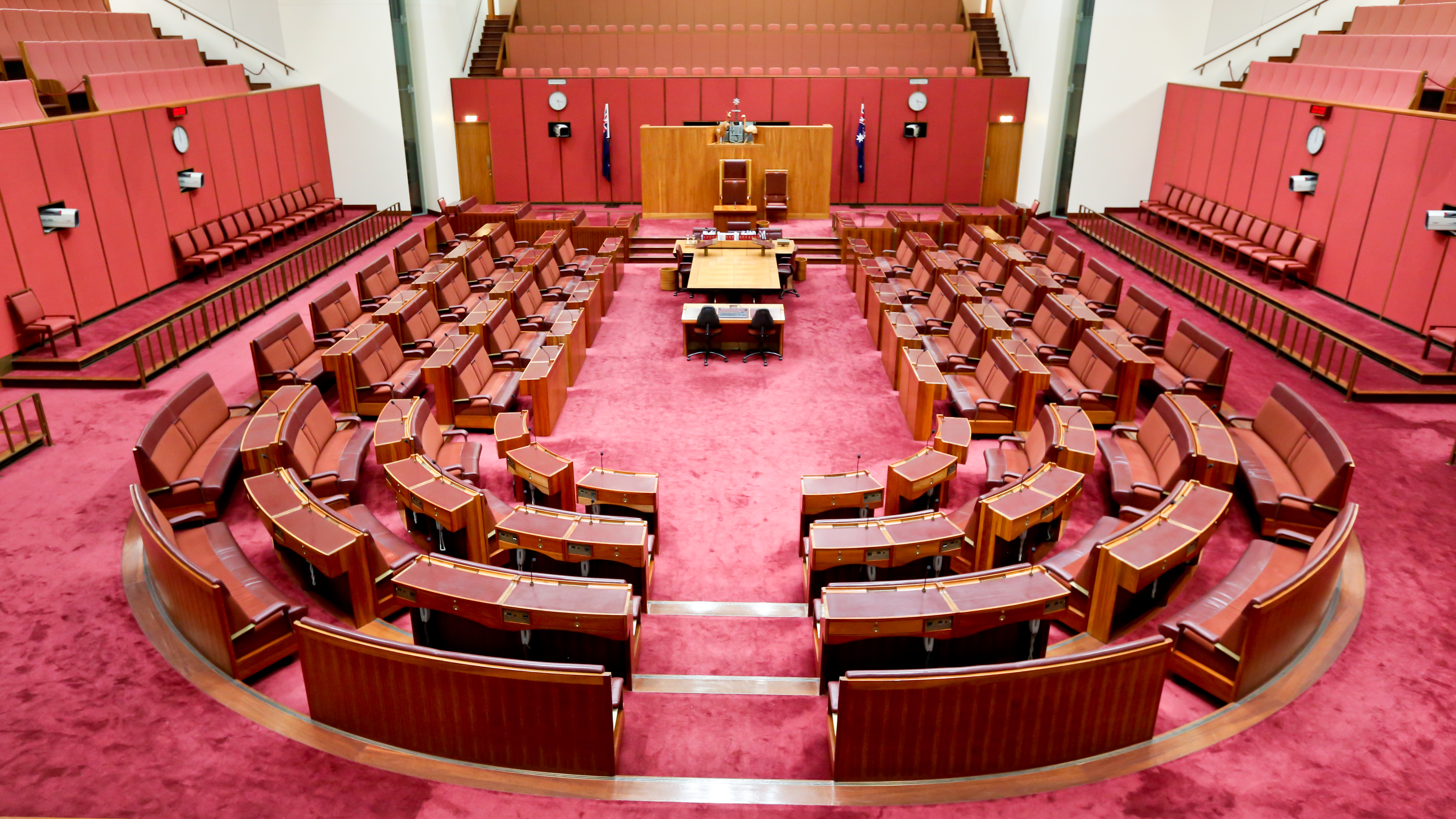
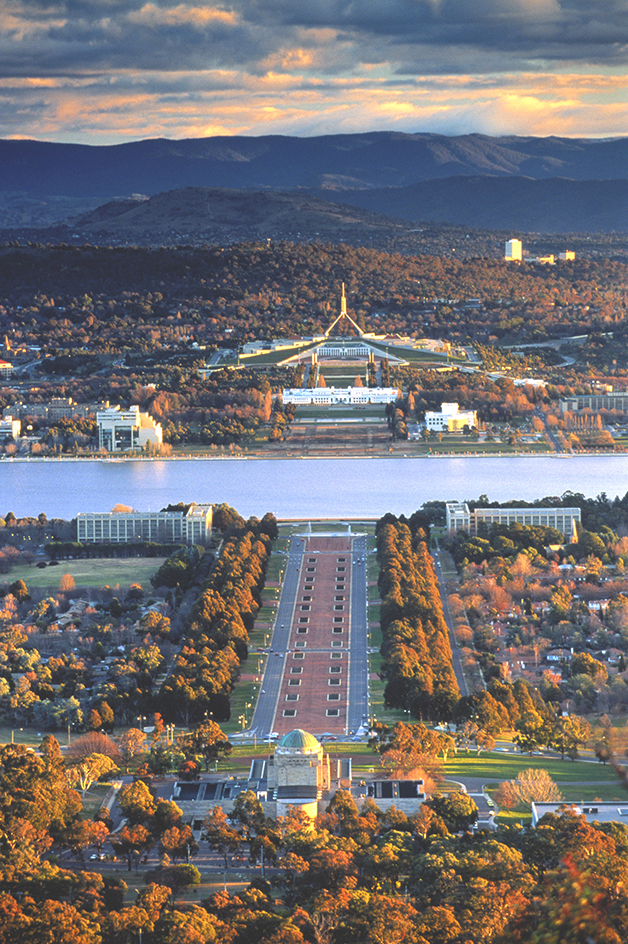
The federal government administered Canberra until 1989. Then the Australian Capital Territory gained the same powers of self-government as Australia’s states. Voters in the territory elected a parliament called the Legislative Assembly, which became responsible for the administration of Canberra.
In 2003, bushfires produced widespread damage in Canberra. Lightning strikes in the Australian Alps west of the city ignited a number of bushfires in early January. Severe weather conditions on January 18 caused fire to spread rapidly, sweeping into some of the city’s suburbs. The bushfires caused four deaths and destroyed about 500 houses in Canberra.
Development projects have continued in the region. A new museum building to house the National Portrait Gallery opened in 2008. An enlargement of the Cotter Dam was completed in 2013, which increased the city’s water reserves.
The city was again impacted by bushfires in late 2019 and early 2020, when fires blazing across large parts of eastern Australia made the air in many cities, including Canberra, dangerous to breathe. A bushfire that began in late January burned about 80 percent of the Namadgi National Park and part of the neighboring Tidbinbilla Nature Reserve.
In 2020, the COVID-19 pandemic (worldwide epidemic) spread to Australia. The nation’s federal, state, and territorial governments took action to try to limit the spread of the disease and to ease the financial hardships caused by it.
